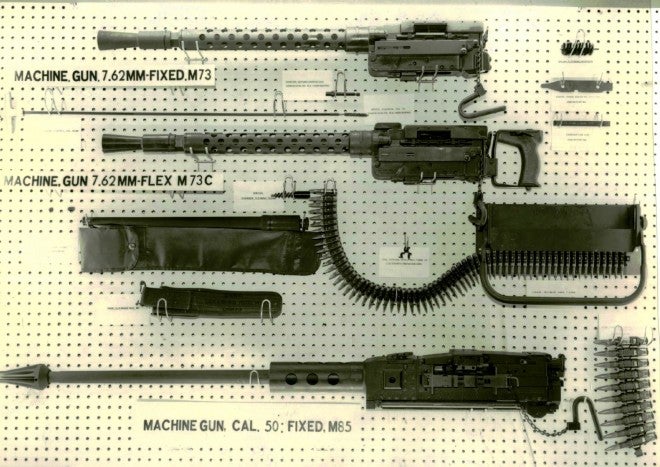The period from 1945-1970 did not represent the figurative finest hour in US small arms design. From the problematic M60, to too little too late M14, to the disastrous initial fielding of the M16, US small arms design during the time seemed to simultaneously reach to far and grasp too little. One family of firearms that was a product of this period of development was a short-action armored fighting vehicle secondary machine gun design, incarnated in the M73 7.62mm and M85 .50 caliber, and later M219 7.62mm types. (EDIT: I don’t really think the M85 should be thrown in there, as it’s a substantially different design, though it shares some features with the M73 and M219. Mea culpa.)
Below is a training film covering the operation and disassembly of the “Machine Gun 7.62mm Tank M73”, hosted at the excellent channel of Jeff Quitney:
The M73, though short, got a reputation as being complex and unreliable. Why is unclear to me, as the gun generally appears to be well-thought-out for a tank MG, with some very desirable features:
1. The barrel can be removed while the gun is mounted behind armor, via the receiver swinging from either the right or the left).
2. Feed can be switched from the left to the right, a good feature to allow the gun to be reloaded easily from different positions in a cramped armored vehicle.
3. As previously mentioned, the receiver is short, reducing the space taken up inside the vehicle by the gun.
4. The weapon is charged via a chain, like a lawnmower. In the confines of a tank, this allows the gunner to charge the weapon without either having to reach all the way over to the gun or, god forbid, getting out from behind armor.
5. Cyclic rate of 450-500. This in theory should reduce wear and ammunition consumption while improving reliability, and is plenty high enough for tank MG duties.
6. Solenoid fired, to allow for a remote trigger. The guns are also provided with a manual back-up trigger.
So why was the M73/M85/M219 family so unreliable and bad? Today they have an almost legendary reputation for being stinkers in the field, but I admit I have no good theories as to why they were so unsuccessful. The fundamental designs seem sound enough, and the unique features they brought to the table really do impress.
Whatever the reason, this family of weapons was eventually replaced. The M73, by the improved but not much better M219, and then eventually by the tank variant of the now ubiquitous M240 machine gun, and the M85 by none other than the very weapon it was originally to replace, the timeless “Ma Deuce” M2 Browning heavy machine gun.
 Your Privacy Choices
Your Privacy Choices
